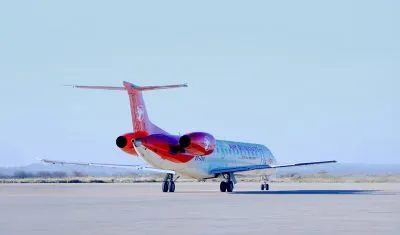Following a period of economic instability characterised by sluggish growth and rising debt levels, Ghana’s economy is on the path to recovery, mainly due to an improvement in the global economy and the policies of President Nana Akufo-Addo’s government.
The President, who came into office at the beginning of 2017, inherited an economy which had seen growth shrink from a peak of 14% in 2011 to 3.6% in 2016. The country’s economy declined significantly largely because of global price fluctuations of key export commodities, including crude oil, gold and cocoa.
Debt levels also ballooned to unsustainable levels under the regime of former President John Mahama, with debt as a proportion of GDP reaching 73%, and interest payments consuming 42% of tax revenue. The perilous economic conditions that Akufo-Addo inherited threatened to derail his ambitious plans, which included building a dam in every village in the neglected Northern Region, constructing a factory in each of the country’s 216 districts and spending $1m a year on development in every constituency.
He also pledged to improve the ease of doing business in the country by introducing sweeping reforms to all areas of the economy. Shortly after Akufo-Addo’s inauguration, the government was forced into securing a $918m IMF loan, which had a series of conditions including slashing public spending and ensuring the banks were properly capitalised, in order to restructure the country’s debts.
Opposition parties and many analysts called on the government to scale back on its plans because of the new economic realities; however, Akufo-Addo pressed ahead defiantly. Speaking shortly after unveiling his economic plans in his inaugural State of the Nation address, the President told parliament: “I have heard it said that I am behaving like a man in a hurry. Mr Speaker, I am indeed in a hurry. The times in which we live demand that we all be in a hurry to deal with the problems we face.”
The gamble paid off as Ghana’s economy began to recover last year, with the economy growing year-on-year by 9.3% in the third quarter of 2017, and above a 9.0% rise in the second quarter. While the business-friendly environment fostered by the government helped restore fiscal credibility to Ghana, the drivers of growth were a recovery in global oil prices, which rose from a low of $30 a barrel in June 2016 to average above $50 a barrel throughout much of the year; and in gold prices, which rose from $1,100 an ounce at the beginning of 2016 to around $1,300 a year later.
The oil and gas industry, which accounts for 26.5% of Ghana’s GDP, was also boosted by the ramping up of output from the Tweneboa Enyenra Ntomme oil field off the coast. The government also successfully curbed inflation, which fell from a peak of 19.2% in March 2016 to 10.3% in January 2018. Meanwhile, the cedi stabilised at around C4.35 to the dollar for most of 2017.
Furthermore, the government has managed to reduce Ghana’s debt-to-GDP ratio from 73.3% in December 2016 to 68.7% as of November 2017, the last recorded period. The ratio is set to decrease further to 66.1% by the end of 2018. As a result of the improving macroeconomic conditions, GDP is forecast to reach 8.3% in 2018, according to the World Bank, and while the recovery is still some way off the heights of double-digit growth experienced seven years ago, the conditions in Ghana point to sustained economic development.
Market confidence returns
Akufo-Addo’s policies have also restored market confidence across all areas of the economy. In the banking sector, the government issued an energy bond to tackle non-performing loans (NPLs) which had weighed heavily on banks’ books.
The capital markets also benefited through the issuance of long-term debt instruments and market reforms, while the insurance sector saw growth and the government has targeted the industry as a key growth area. While the market is bullish about Ghana’s prospects, some analysts have warned that chronic economic challenges could hamper development if the issues are not confronted by the government.
Chronic challenges
One of the key challenges facing Ghana, and many other African nations, is dependence on extractive industries to bring in foreign currency and income. The reliance on oil, gold and cocoa revenue leaves the country vulnerable to fluctuations in global prices and inflation.
The government hopes to reduce dependence on commodity exports by pushing through an ‘aggressive’ industrialisation programme dubbed the Akufo-Addo Programme for Economic Transformation (AAPET). It builds on ‘One Village, One Dam’ and ‘One District, One Factory’ programmes which were implemented last year.
The former has received investment pledges of $21.2m; while the latter has received $3bn. The aim of AAPET is to diversify the economy, create jobs, develop infrastructure and increase agriculture investment. Analysts have warned that this could add to Ghana’s already large debt stock. But Minister of Finance Ken Ofori-Atta claims that private investors will fund most of the programme.
President Akufo-Addo has staked his premiership on delivering AAPET and if he is successful the electorate will surely re-elect him in 2020, but if he fails, then Ghana’s economy could end up in a worse state than when he started.
Taku Dzimwasha
Want to continue reading? Subscribe today.
You've read all your free articles for this month! Subscribe now to enjoy full access to our content.
Digital Monthly
£8.00 / month
Receive full unlimited access to our articles, opinions, podcasts and more.
Digital Yearly
£70.00 / year
Our best value offer - save £26 and gain access to all of our digital content for an entire year!

 Sign in with Google
Sign in with Google 




